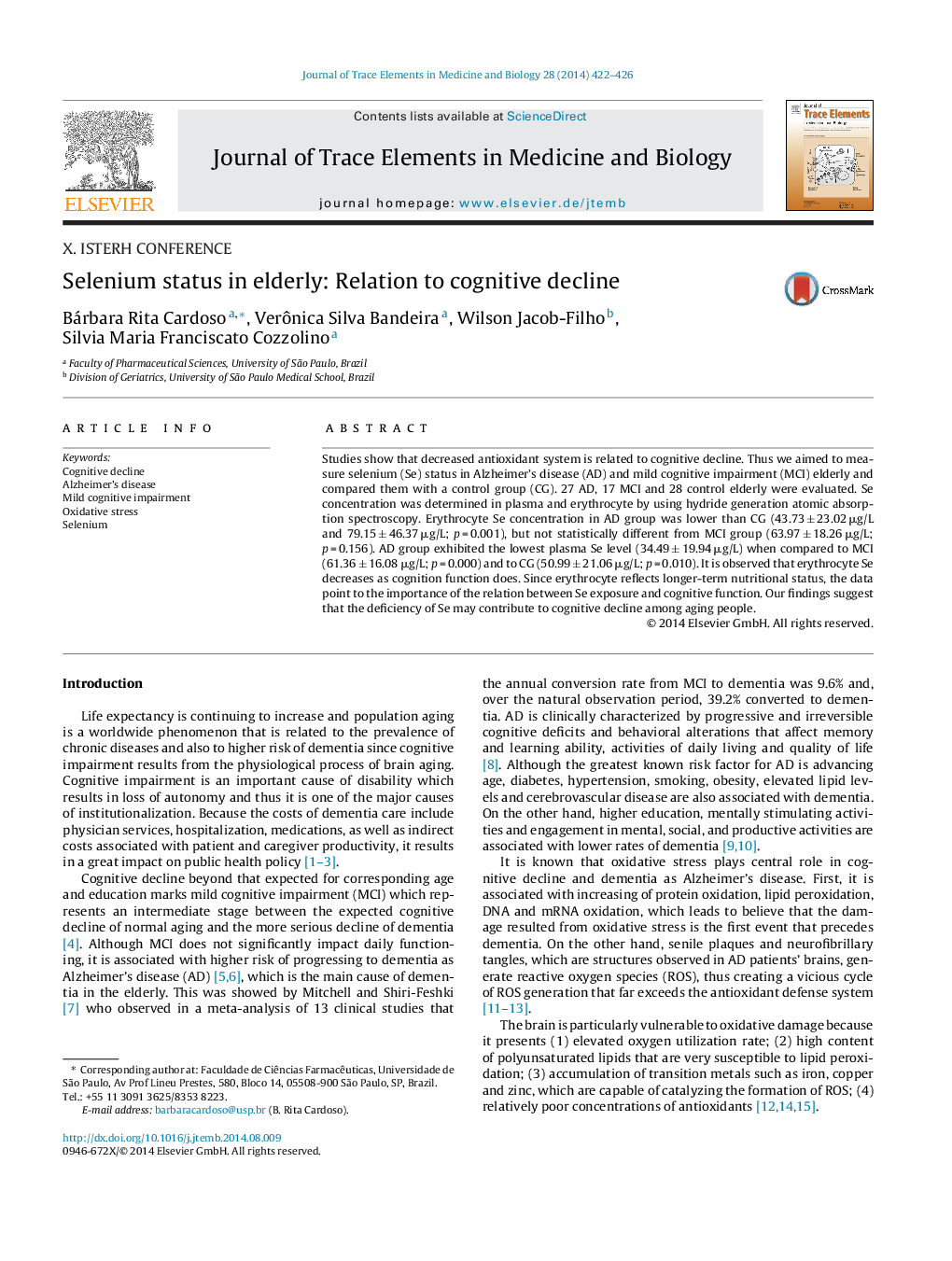| Article ID | Journal | Published Year | Pages | File Type |
|---|---|---|---|---|
| 1226459 | Journal of Trace Elements in Medicine and Biology | 2014 | 5 Pages |
Studies show that decreased antioxidant system is related to cognitive decline. Thus we aimed to measure selenium (Se) status in Alzheimer's disease (AD) and mild cognitive impairment (MCI) elderly and compared them with a control group (CG). 27 AD, 17 MCI and 28 control elderly were evaluated. Se concentration was determined in plasma and erythrocyte by using hydride generation atomic absorption spectroscopy. Erythrocyte Se concentration in AD group was lower than CG (43.73 ± 23.02 μg/L and 79.15 ± 46.37 μg/L; p = 0.001), but not statistically different from MCI group (63.97 ± 18.26 μg/L; p = 0.156). AD group exhibited the lowest plasma Se level (34.49 ± 19.94 μg/L) when compared to MCI (61.36 ± 16.08 μg/L; p = 0.000) and to CG (50.99 ± 21.06 μg/L; p = 0.010). It is observed that erythrocyte Se decreases as cognition function does. Since erythrocyte reflects longer-term nutritional status, the data point to the importance of the relation between Se exposure and cognitive function. Our findings suggest that the deficiency of Se may contribute to cognitive decline among aging people.
